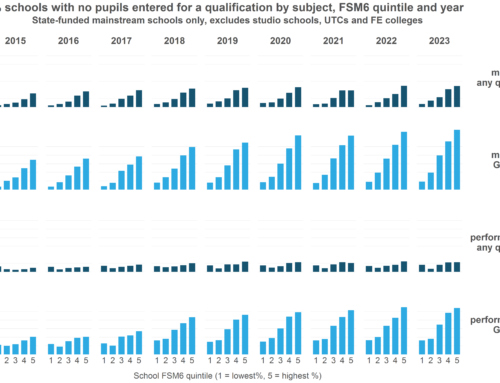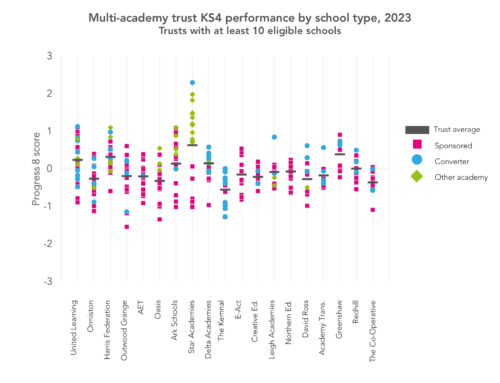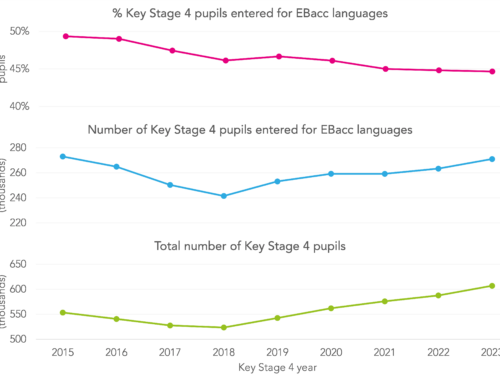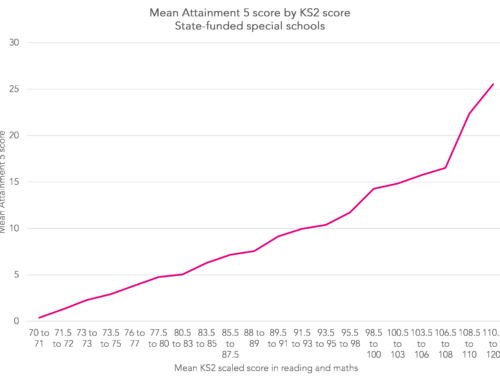The latest exclusion figures have just been published by the Department for Education. Permanent exclusion rates overall have nudged up fractionally, but are still pretty much at a rate of 0.1 exclusions per 100 pupils.
The permanent exclusion rate for secondary schools is up marginally, but rates are actually very slightly down for primary and special schools, as the chart below shows.
There are two things worth keeping in mind when looking at exclusion figures such as these.
Firstly, the most common number of permanent exclusions for a secondary school to carry out in a given year is…zero. (The same is also true – and by a much greater margin – for primary schools.) We are talking about what are still reasonably rare events.
The chart below shows the range of permanent exclusions carried out by secondary schools in the 2017/18 school year, with zero standing out clearly as the most common, or modal, number. Around two-fifths of secondary schools carried out no permanent exclusions last year. At the other end of the scale, two schools carried out 20 or more such exclusions.
The second point that’s worth keeping in mind is that these figures only capture formal exclusions. As we started warning about some time ago, a focus on formal exclusions alone ignores off-rolling, or informal exclusion. (We first asked the DfE if it was satisfied that enough was being done to prevent gaming of this sort two and a half years ago.)
The recent exclusions review carried out by the former children’s minister Edward Timpson was clear that off-rolling must cease. This might lead to an increase in recorded exclusion numbers in the short to medium term, but in many ways formal exclusions are preferable to informal exclusions, as they come with a legal right for a review of the decision to exclude.
Neither informal exclusion nor off-rolling are exclusion and they should not be conflated with schools following the proper exclusion process. They are quite simply wrong…[T]ackling this rare but unacceptable practice could result in a rise in formal exclusion, as they would no longer be hidden from scrutiny and due process. Putting all formal exclusions that have gone through the proper processes above the table in this way should be seen as positive progress.
Acting as a force in the opposite direction, however, could be the fact that – if the new government continues with a policy commitment made Damian Hinds [PDF] – schools will be made accountable for the outcomes of all permanently excluded pupils. Without very careful implementation, this could increase incentives to off-roll, which a minority may be inclined to act upon.
Want to stay up-to-date with the latest research from FFT Education Datalab? Sign up to Datalab’s mailing list to get notifications about new blogposts, or to receive the team’s half-termly newsletter.






Leave A Comment